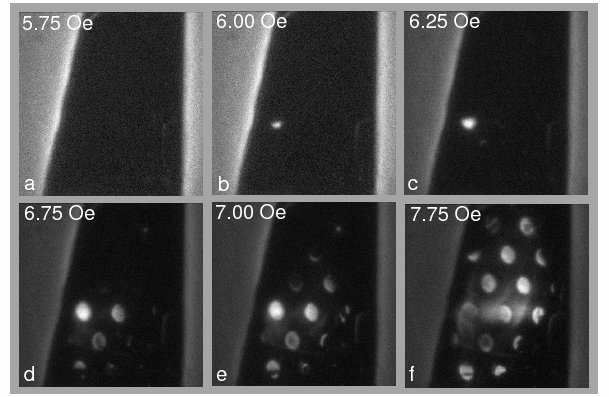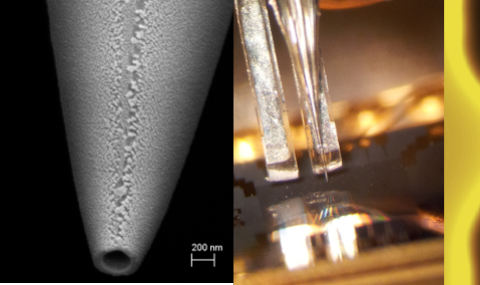The thermodynamic lower critical field Hc1 is one of the fundamental parameters of the mixed state in type II superconductors. At Hc1 the formation of vortices becomes energetically favorable and the superconductor undergoes a transition from the Meissner state to the mixed state. The value of Hc1 and the way the field penetrates into the sample are directly related to the free energy of a vortex and to essential mixed state parameters such as the penetration depth and the Ginzburg-Landau parameter.
In this work we used magneto-optical measurements combined with the shaking technique to study the equilibrium field penetration into superconducting thin platelets containing small regions in which columnar defects were introduced by heavy ion irradiation. We observed reduction of Hc1 due to columnar defects and a remarkably abrupt field penetration into the irradiated regions. We derived a model that shows how geometrical effects can enhance small differences in the lower critical field and lead to large variations in the local penetration field.
These phenomena should be very important in inhomogeneous samples – a minute material inhomogeneities can significantly affect the way the field penetrates into the sample and can result in large variations in the local induction.

The figure presents a sequence of images from a movie of the transition from the Meissner state to the mixed state under equilibrium conditions at 72 K. At 5.75 Oe both the irradiated and the pristine regions are in the Meissner state and the whole sample appears dark. When increasing Ha to 6 Oe, a bright region appears in one of the irradiated regions in the left part of the sample, indicating the penetration of vortices into the irradiated region. When further increasing the field, more vortices penetrate into this region while the surrounding pristine regions are still in the Meissner state. At 6.75 Oe, vortices penetrate into additional irradiated regions. Finally, at 7.75 Oe the vortices penetrate also into the pristine regions as shown by the bright region in the middle of the sample.


